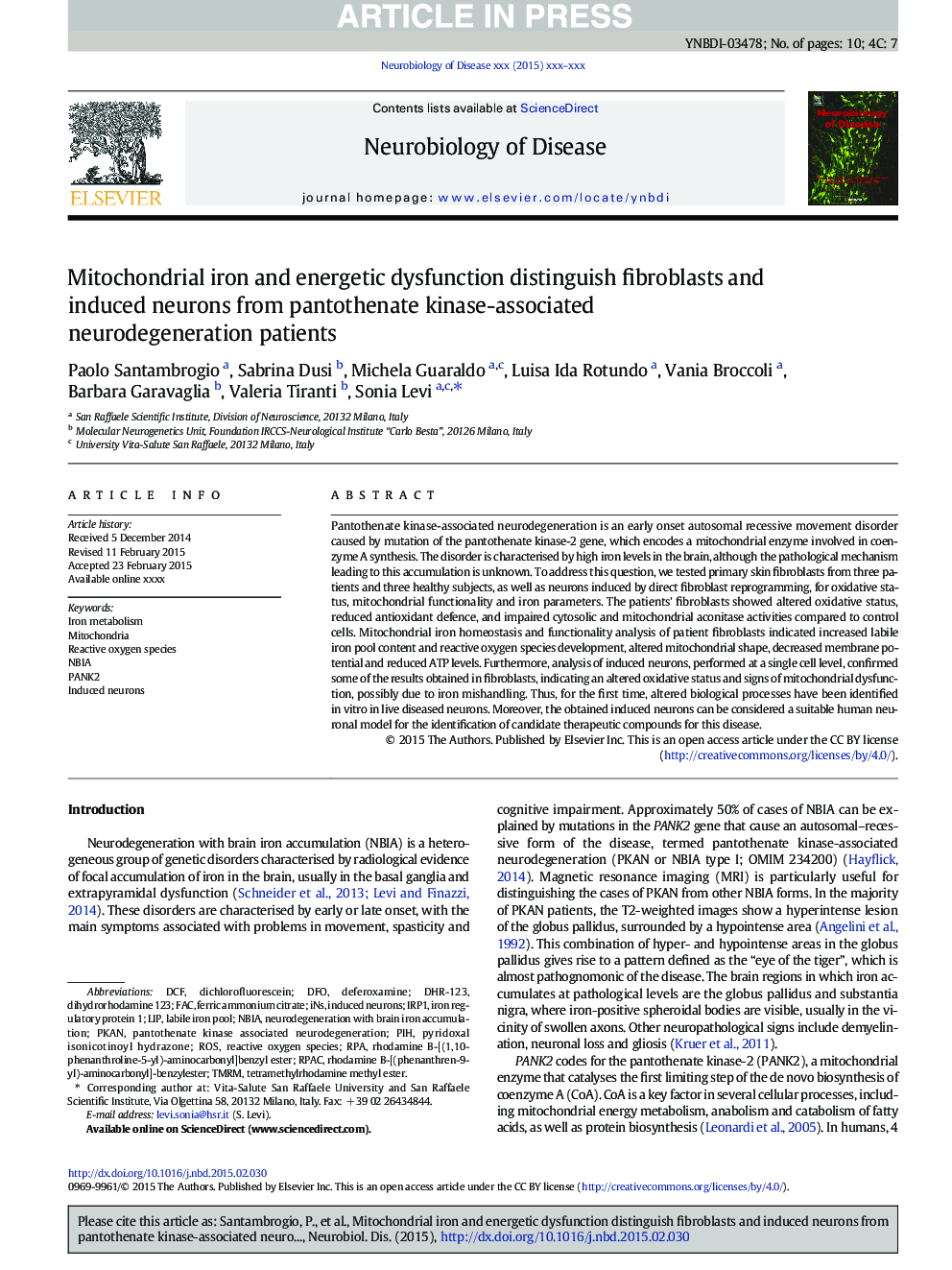| Article ID | Journal | Published Year | Pages | File Type |
|---|---|---|---|---|
| 6021484 | Neurobiology of Disease | 2015 | 10 Pages |
Abstract
Pantothenate kinase-associated neurodegeneration is an early onset autosomal recessive movement disorder caused by mutation of the pantothenate kinase-2 gene, which encodes a mitochondrial enzyme involved in coenzyme A synthesis. The disorder is characterised by high iron levels in the brain, although the pathological mechanism leading to this accumulation is unknown. To address this question, we tested primary skin fibroblasts from three patients and three healthy subjects, as well as neurons induced by direct fibroblast reprogramming, for oxidative status, mitochondrial functionality and iron parameters. The patients' fibroblasts showed altered oxidative status, reduced antioxidant defence, and impaired cytosolic and mitochondrial aconitase activities compared to control cells. Mitochondrial iron homeostasis and functionality analysis of patient fibroblasts indicated increased labile iron pool content and reactive oxygen species development, altered mitochondrial shape, decreased membrane potential and reduced ATP levels. Furthermore, analysis of induced neurons, performed at a single cell level, confirmed some of the results obtained in fibroblasts, indicating an altered oxidative status and signs of mitochondrial dysfunction, possibly due to iron mishandling. Thus, for the first time, altered biological processes have been identified in vitro in live diseased neurons. Moreover, the obtained induced neurons can be considered a suitable human neuronal model for the identification of candidate therapeutic compounds for this disease.
Keywords
PIHDHR-123IRP1PANK2PKANTMRMNBIARPAdichlorofluoresceinLIPDFODeferoxamineDcfINSFACROSFerric Ammonium CitrateLabile iron poolneurodegeneration with brain iron accumulationdihydrorhodamine 123Iron metabolismtetramethylrhodamine methyl esterMitochondriaInduced NeuronsIron regulatory protein 1Pyridoxal isonicotinoyl hydrazoneReactive oxygen species
Related Topics
Life Sciences
Neuroscience
Neurology
Authors
Paolo Santambrogio, Sabrina Dusi, Michela Guaraldo, Luisa Ida Rotundo, Vania Broccoli, Barbara Garavaglia, Valeria Tiranti, Sonia Levi,
